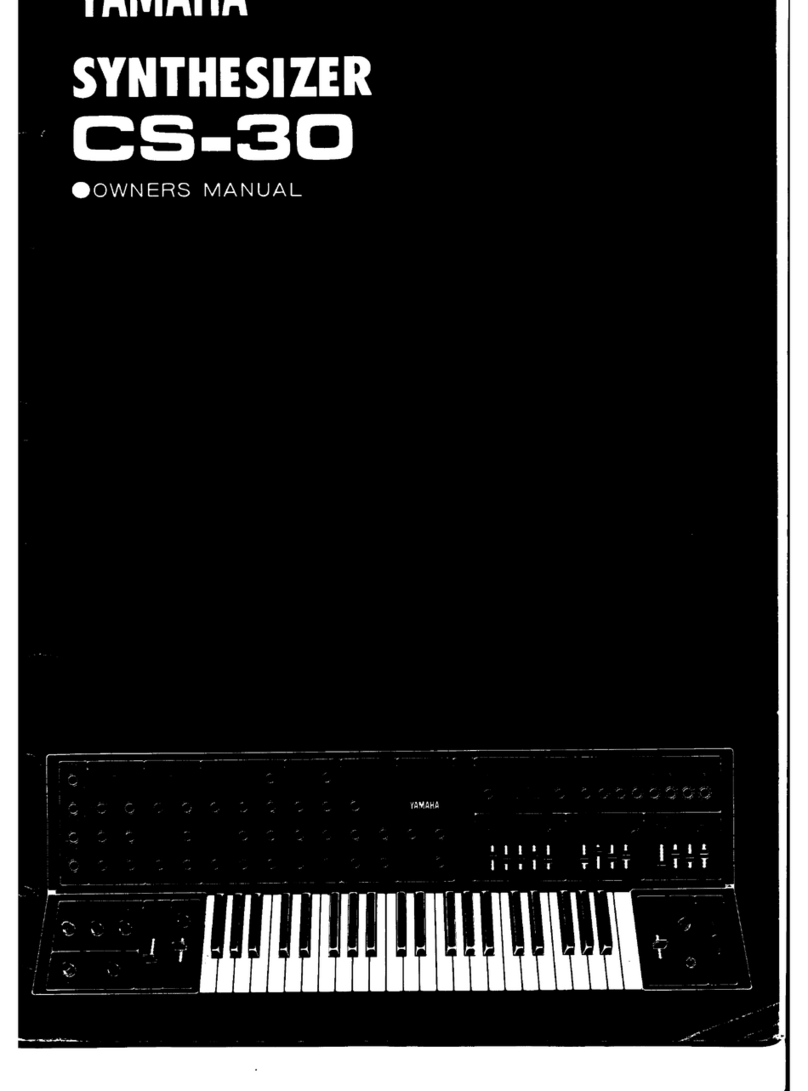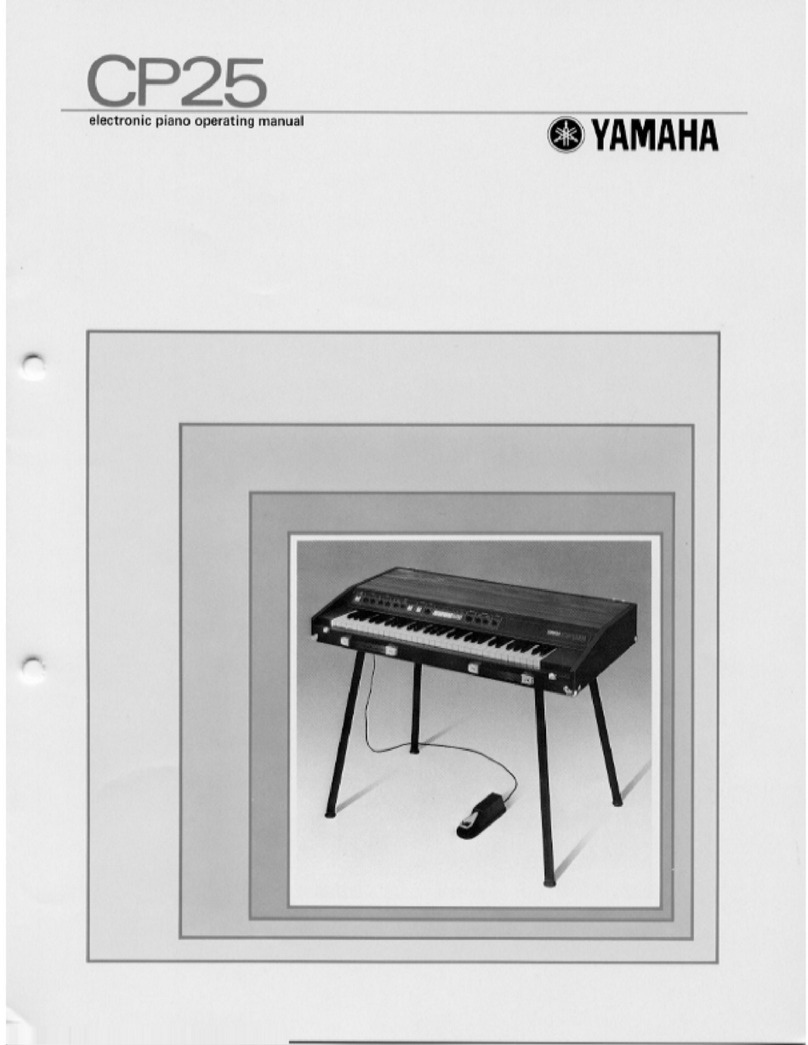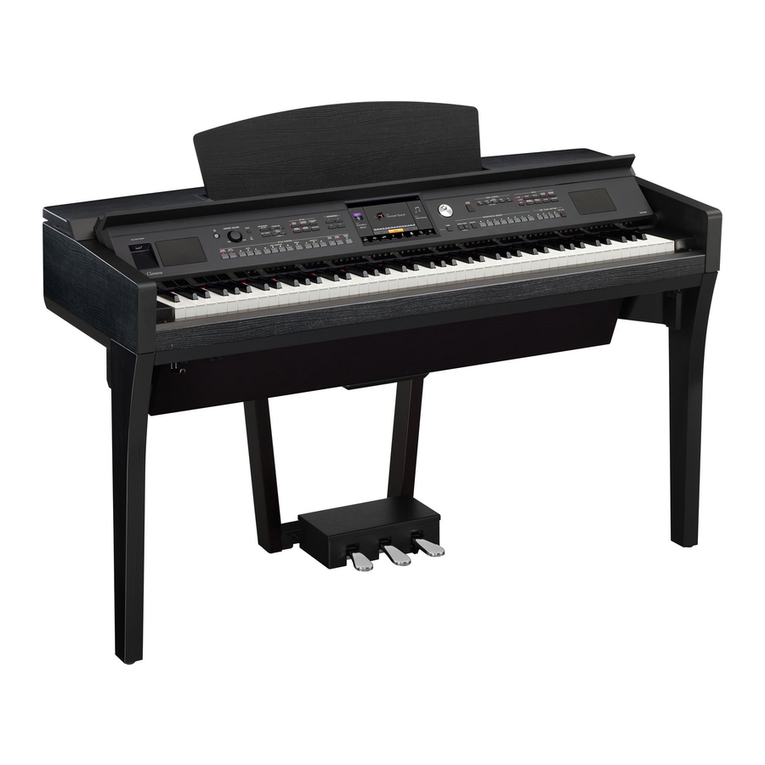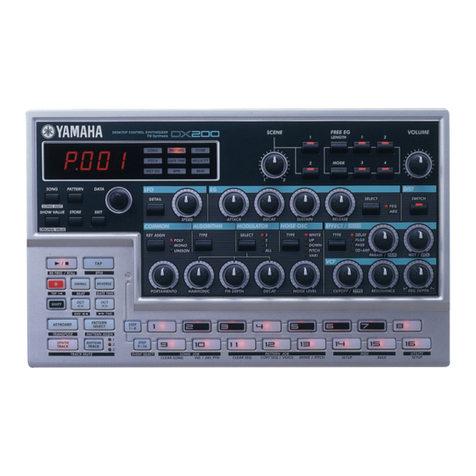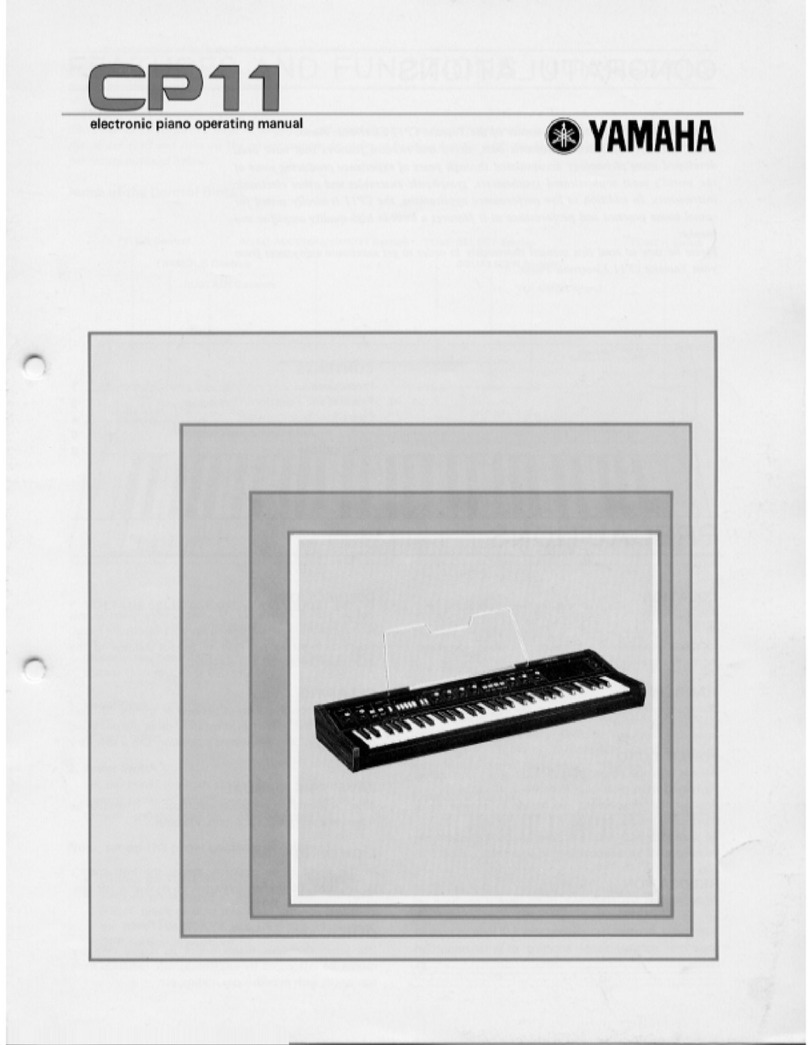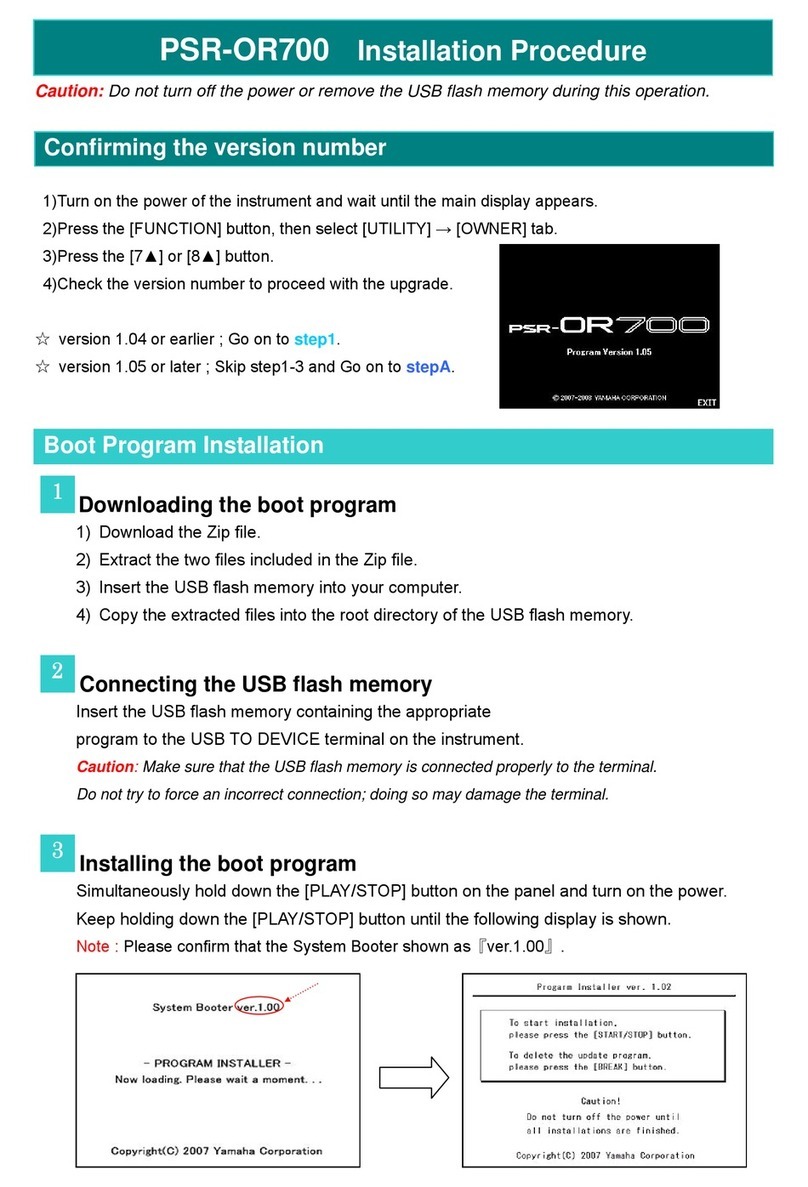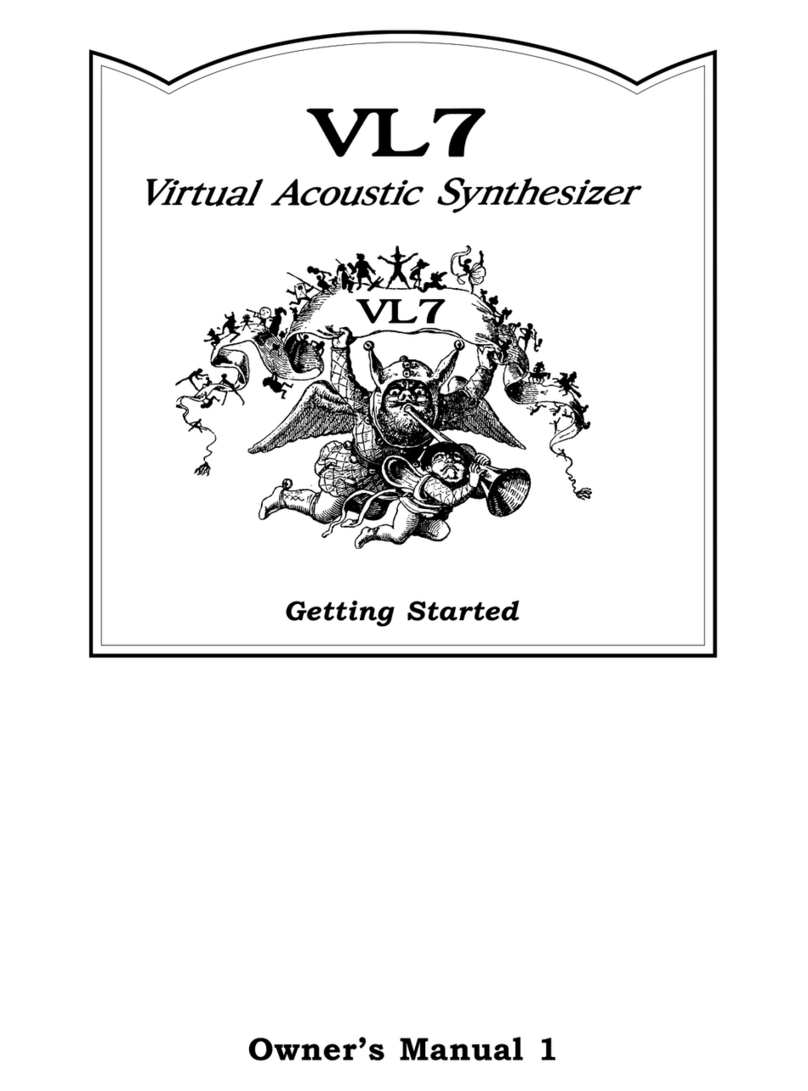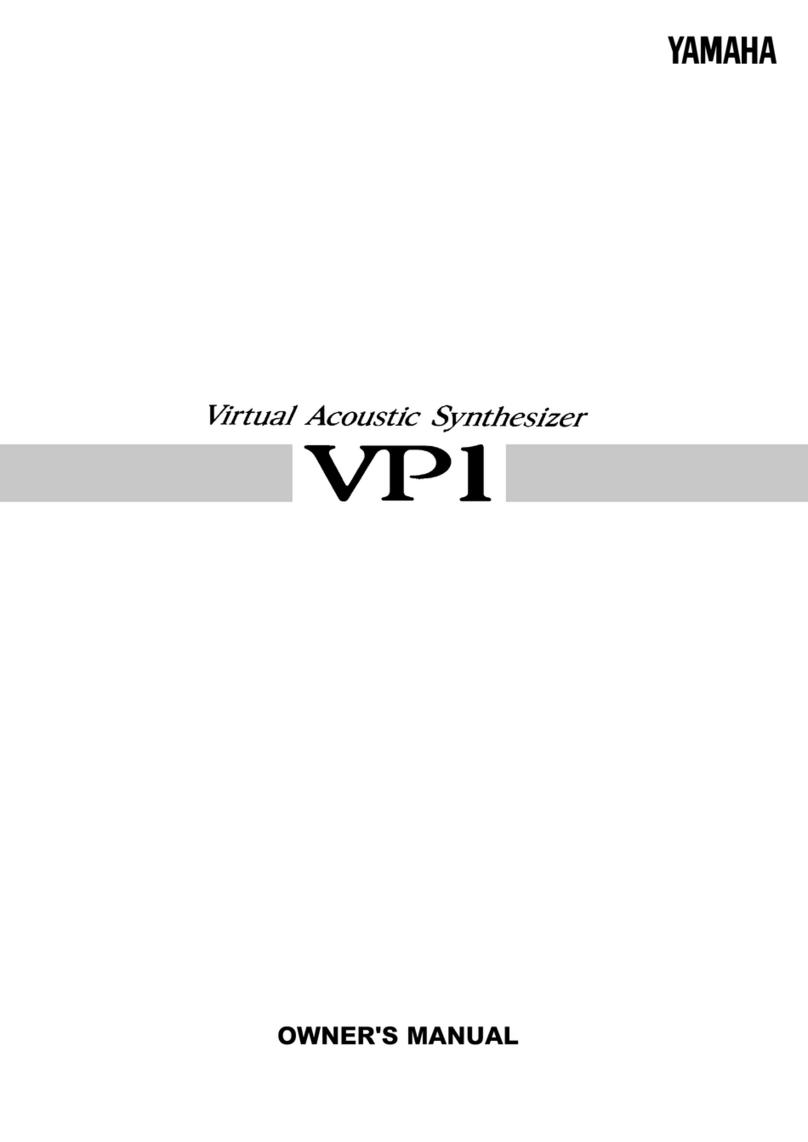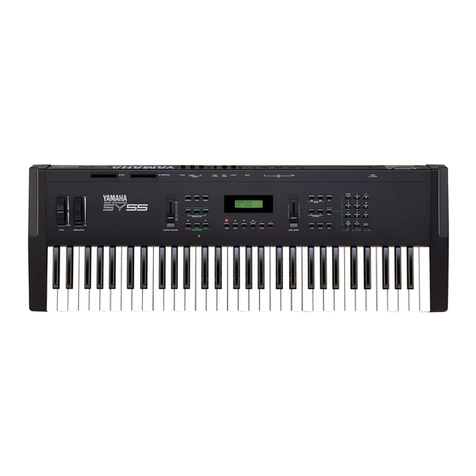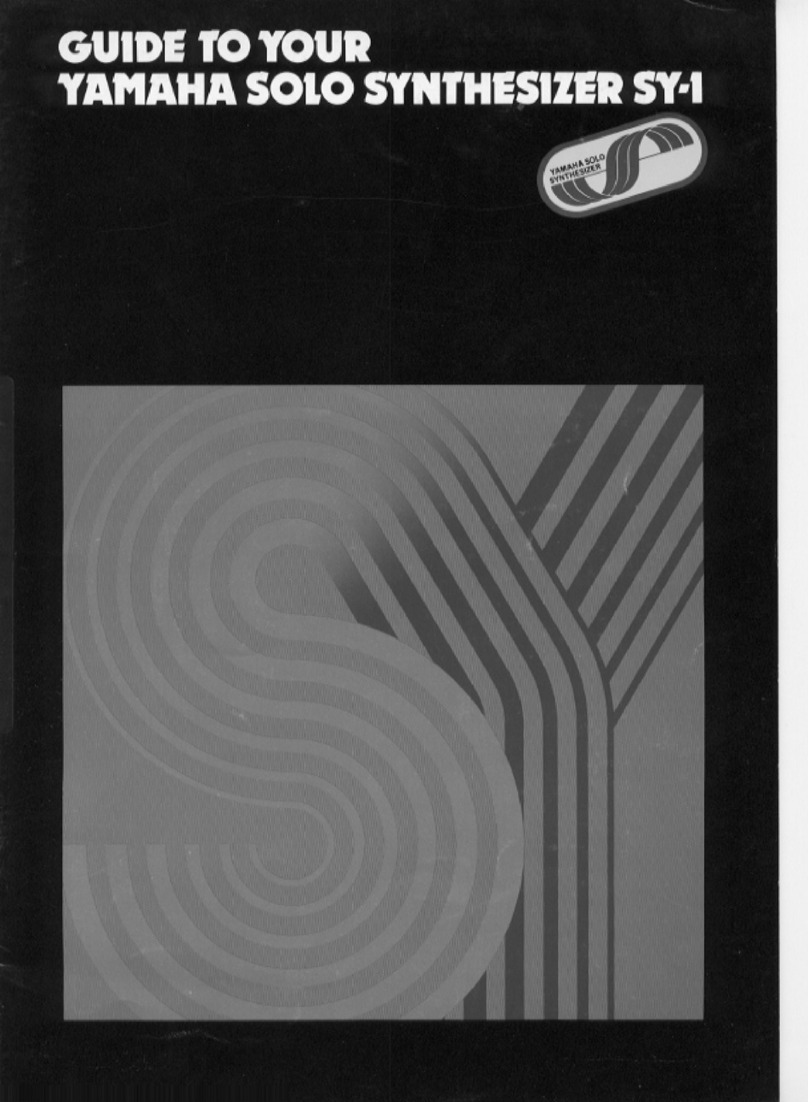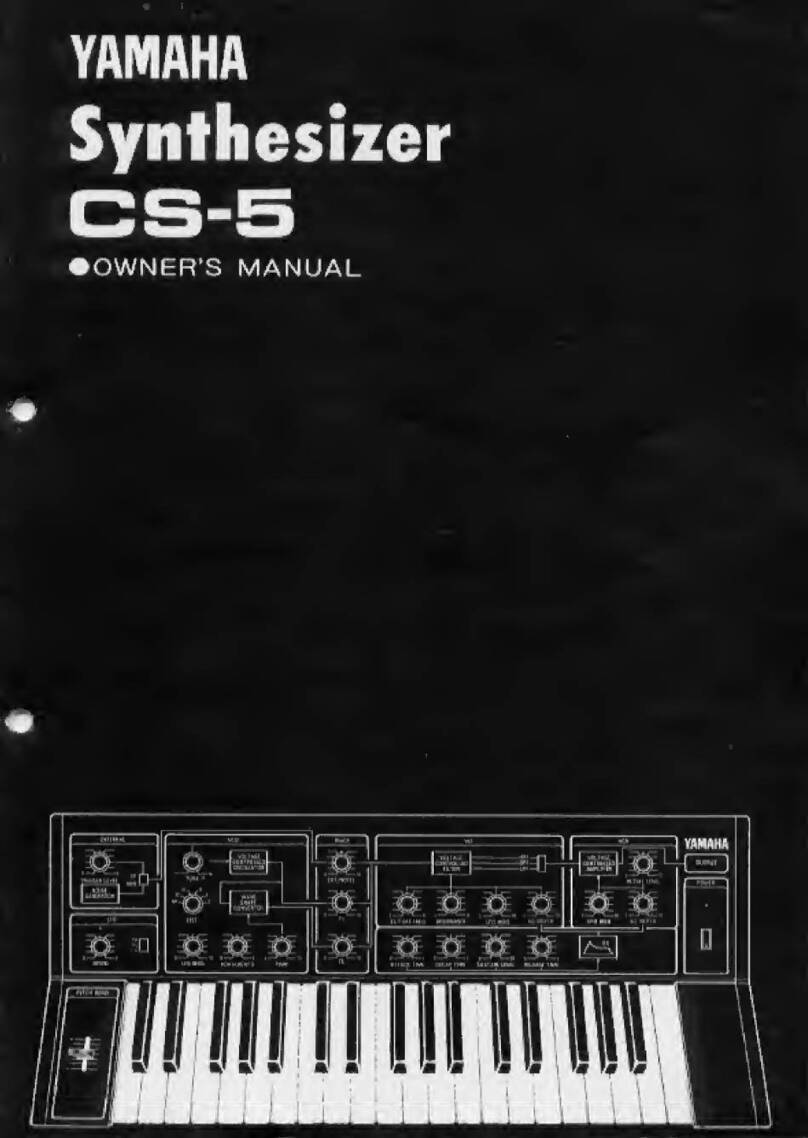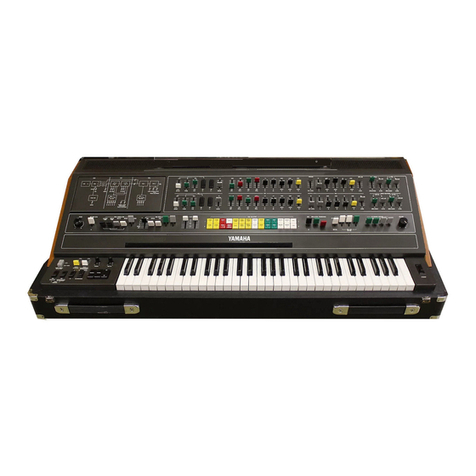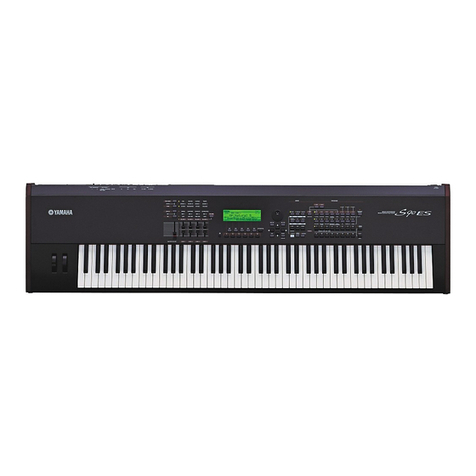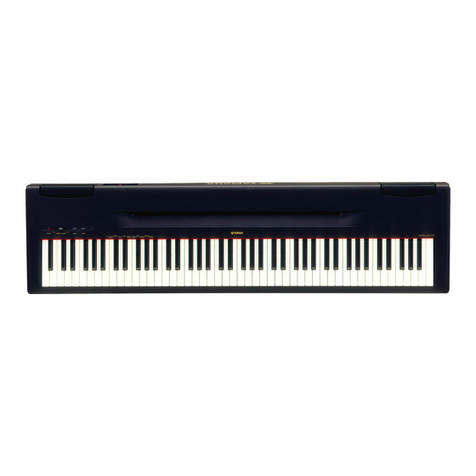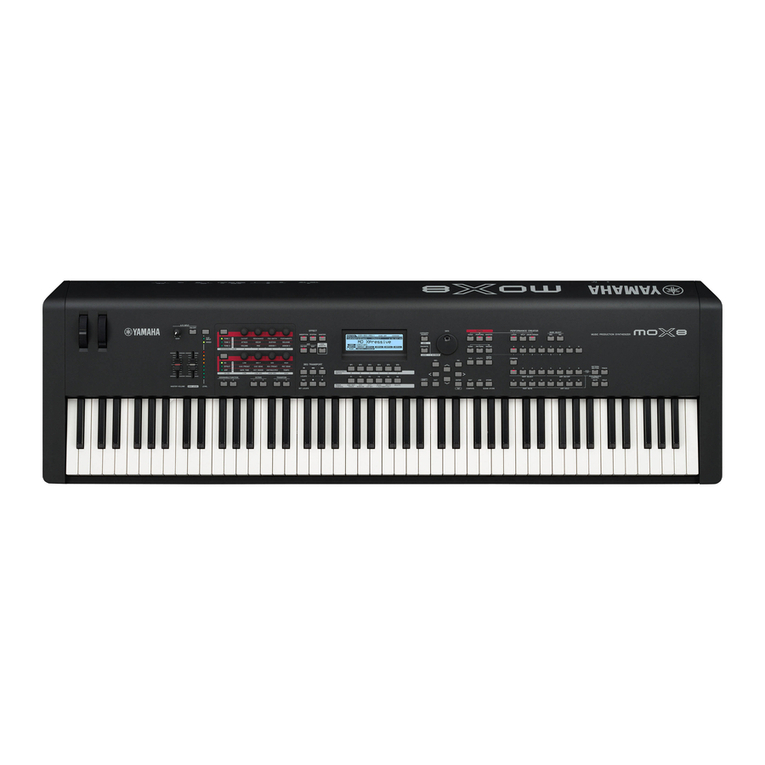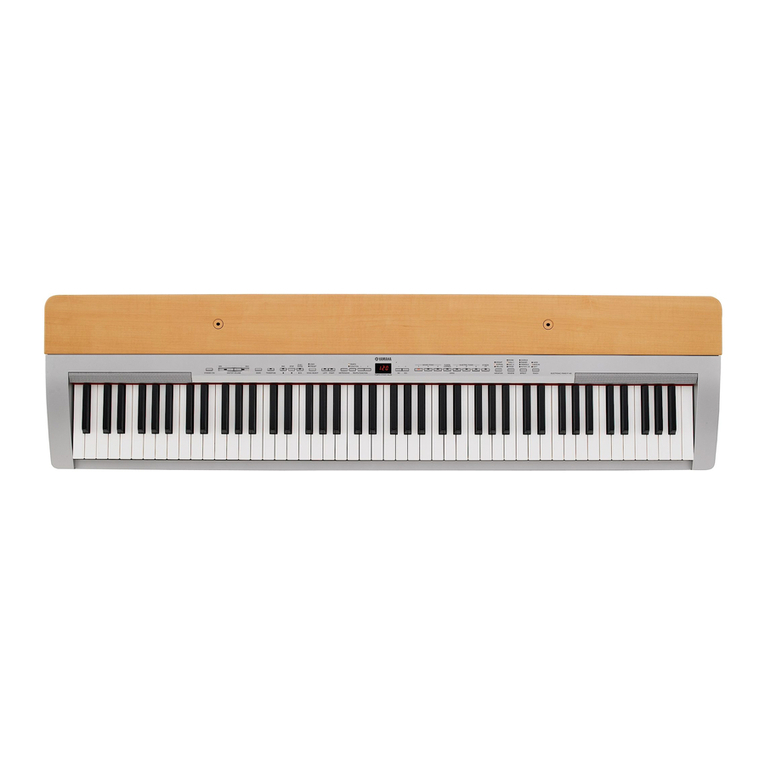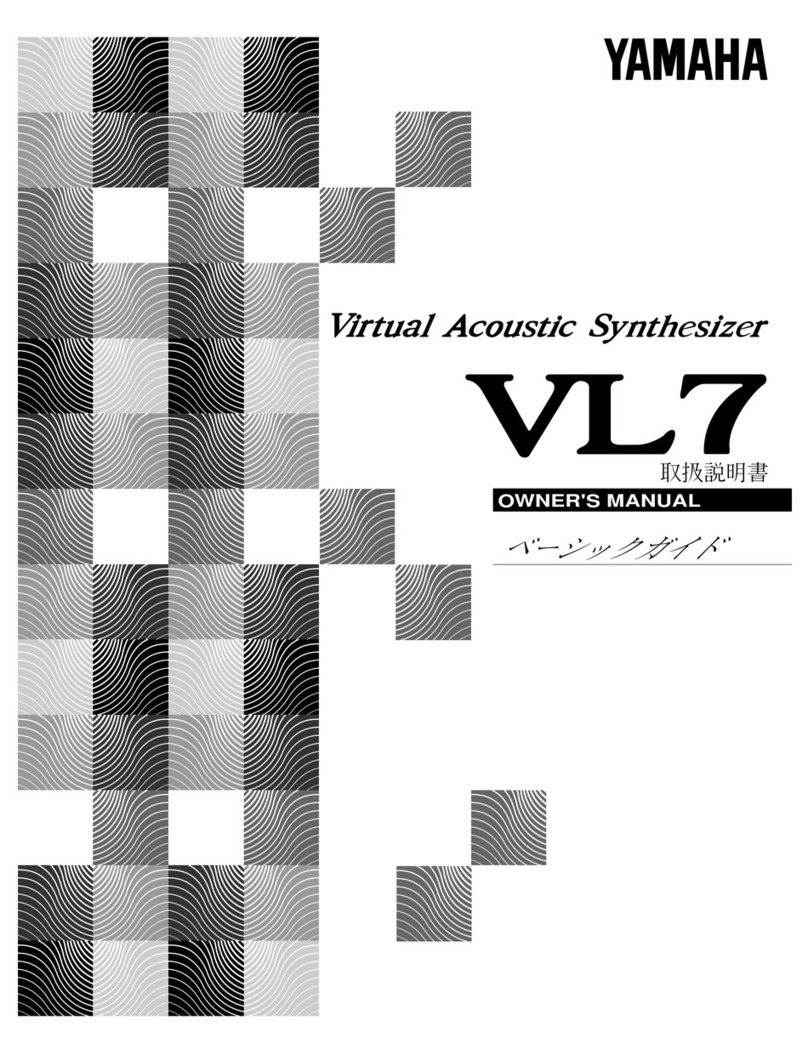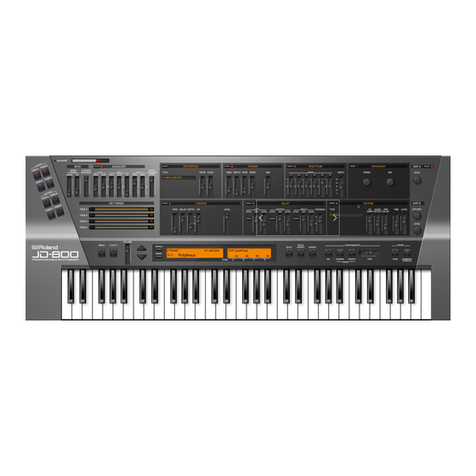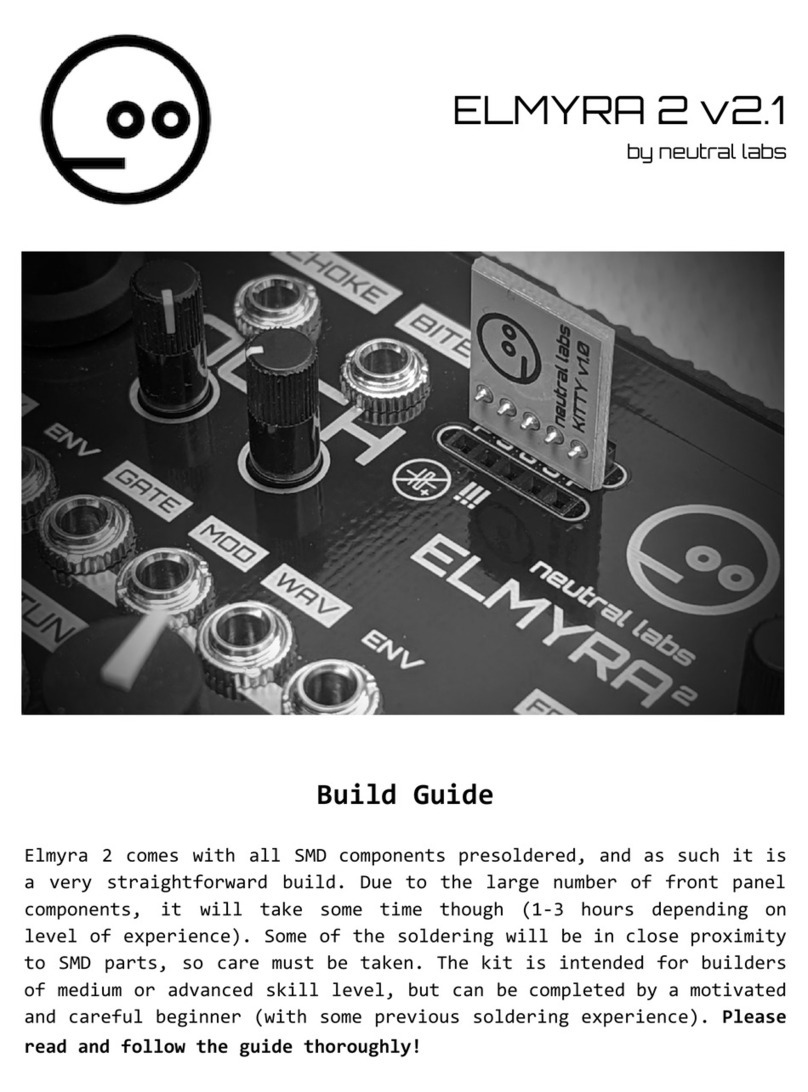
WHAT IS ASYNTHESIZER
Unlike other musical instruments, the synthesizer has
no fixed sound of its own. Thus, before playing it, it is
necessary to shape the sounds. But with the synthesizer
you will be able to create, with your own hands and by
synthesizing sounds, anew type of sound that can never
be made by any other musical instrument.
•THETHREE ELEMENTS OF SOUND
How does asynthesizer make sounds? Before
explaining the principle of the synthesizer, let us
consider what kind of properties sound has.
Sound produced by musical instruments such as
the piano or the guitar has acertain pitch, according
to the key or string used. It is possible to change the
pitch by changing the length of the vibrating portion
of the string. In this case, the string's number of
vibrations per second also changes. The slower the
string vibrates, the lower the pitch becomes. In this
way, it is possible to express the difference in pitch
by the number of vibrations (frequency).
PITCHES
3<*ss sound
Tnefc>l« sevM
Wl/l/WV
However, between the sound of apiano and that
of aguitar there is adifference in tone even when
both sounds are of the same pitch: no one will mis-
take the sound of the piano for that of the guitar.
This is because there is adifference in the way the
strings vibrate (the vibration waveform ), due to the
difference in the arrangement by which the sounds
are generated, and because of the difference in the
shape and size of the musical instruments.
TONES JMf«rerK* in -tones means
PIPNO
Furthermore, even when both the pitch and tone
quality are the same there can be adifference in
sound, such as when the same key of the piano is hit
in aforcible or agentle manner. It is easy to discern
the two sounds from each other because of the
magnitude (volume) of the sound. This is because a
difference will be produced in the size and amplitude
of the string's vibrations, due to the intensity with
which it has been struck.
In this way, sounds produced by musical instru-
ments have such elements as pitch, tone and volume,
whose differences add to the sound's characteristics.
These elements are referred to as "the three elements
of sound", which may also be considered as the
difference in frequency, waveform and amplitude.
•TEMPORAL CHANGE IN SOUNDS
However, the elements which render sounds with
certain characteristics are not confined to these
three. Taking the piano for example, the volume will
reach maximum the instant the key is hit, then will
decrease gradually. When the finger is released from
the keyboard, the sound will fade out. In the case of
the organ, the action of depressing the key will cause
the volume to rise to acertain level, which will be
retained for the duration the keyboard is depressed.
The sound will fade away when the finger is released
from the key.
ENVELOPE Veok (owl Envelope
^tr on KEr OFF
In such musical instruments as the trumpet, for
example, the harmonic spectrum changes together
with the change in volume. The tone changes too,
along with the passage of time.
Thus, the sounds of musical instruments undergo
delicate changes from the time the sound is generated
to the time it fades away. These temporal changes are
known as an "envelope."
•HARMONICS
What must we do in order to produce electrical
sounds that have the above mentioned three elements
of sound, these are pitch, tone and volume, and which
vary with time (have an envelope)? Before going into
the matter, let us view sound again from adifferent
angle.
As regards the vibration waveforms by which the
tone is determined, it is known that any given wave-
form can be considered as consisting of acertain
number of sine waves. In other words, all waveforms
can be produced by combining alarge number of
sine waves. For example, let us overlap over asingle
sine wave waveforms having an integral multiple
©
